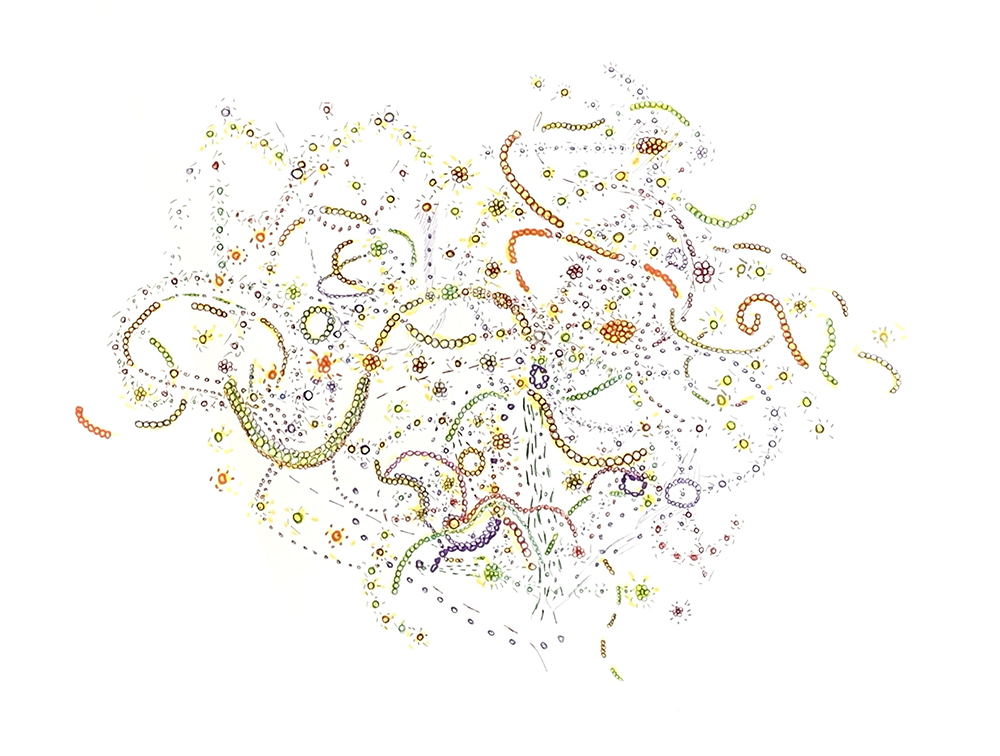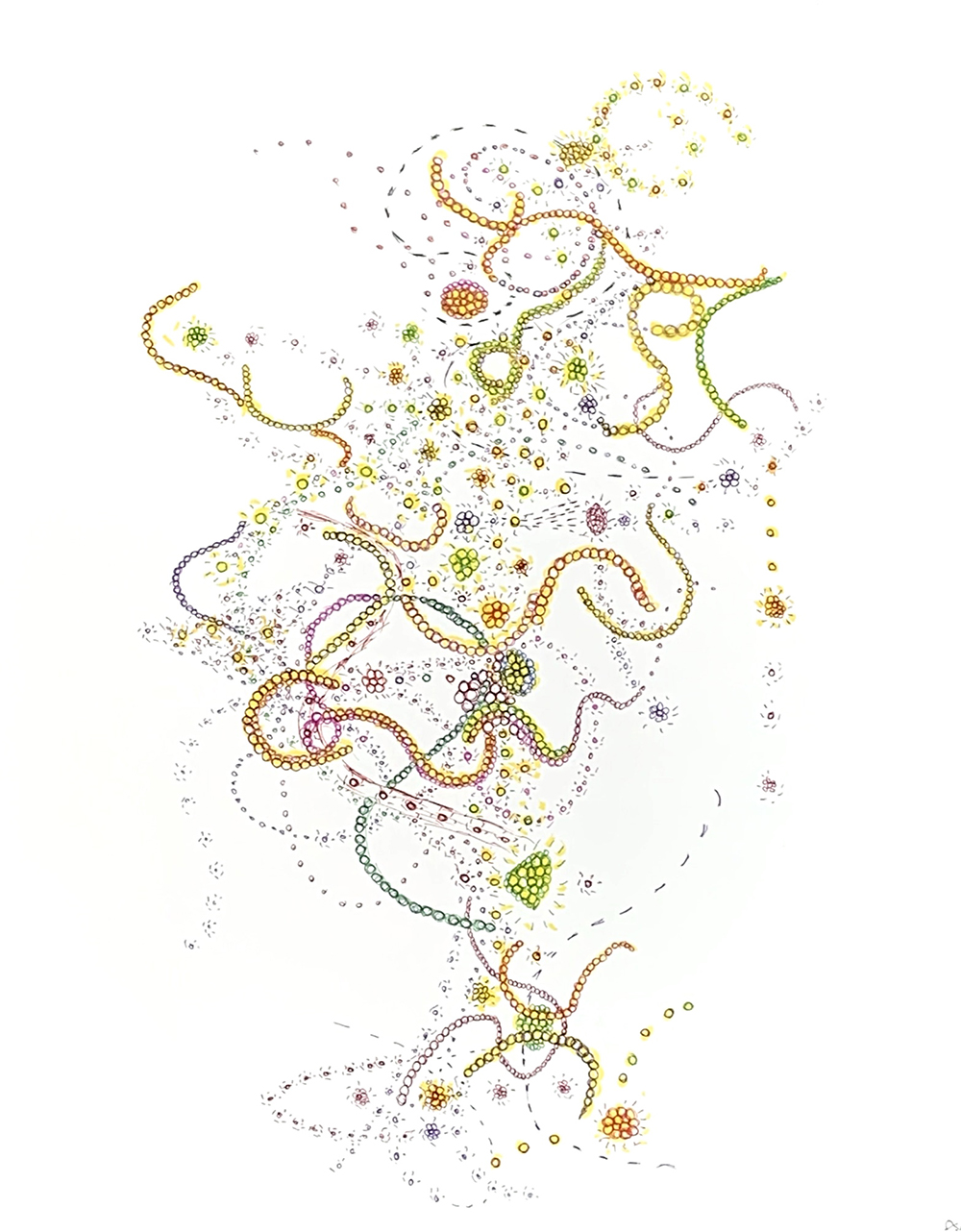It has been a while since David Rubin ended his long and distinguished career as an institutional curator, but he continues to write and curate—and continues to produce art as well. Rubin had put aside his youthful artmaking once his curatorial direction took over, but began drawing again about twenty years ago, when the stimulus of constant exposure to artists—especially postwar American artists and their spiritual quests—finally became too great to resist. Since then, Rubin has concentrated on drawing media, sometimes subject to photographic documentation—intimate media indicative of the role, part creative, part intellectual, that he has played in the American art world.
Since moving back to his native Los Angeles Rubin has concentrated on his drawing, refining his approach so that his images consist entirely of myriad small bubble-like forms strung together in various tendrilous shapes. They suggest microscopic aquatic protozoan life, not least in their lyrical fluidity, but also concatenations of heavenly bodies—stars and detritus alike—into incipient galaxies. This bridging of the micro- and macrocosmic is not accidental; such cosmological harmonizing comes naturally to Rubin in the wake of the metaphysical revelations provided him by the likes of Lee Krasner, Gordon Onslow-Ford, Al Held, and Clare Falkenstein. Even the seemingly mundane imagery of the late Martha Alf has informed Rubin’s transcendent insight, translating the monumentality of her humble subjects and use of light into linear form—what he considers automatic writing. In this regard, the overall title Rubin gives this series—“Pearls of Wisdom”—is not a boast but an homage; the wisdom refined into pearlescent little beads is that of his influences and mentors.

David S. Rubin, Pearls of Wisdom (2), 2020, Courtesy California State University Northridge, West Gallery.
Rubin’s Date Drawings—actually photographs of, among other things, drawings—take their cue from On Kawara, one of the earliest and “simplest” conceptual artists. Kawara’s ongoing project was the noting of date (“January 19 1967”) and/or time (“Today I awoke at 11:08 am”), refining existence into the perceptual system of temporal measurement. The Date Drawings are rather more voluble, posing the sprightly articulations of Rubin’s hand with hard and fast objects such as an alarm clock and a blood pressure monitor. Rubin marks every day with this photographed set-up, making sure to post each one on social media. In this way he both actualizes and obviates—and personalizes—the performative aspect of Kawara’s method.
Rubin also regularly posts his Pearls of Wisdom, but those works are not photographic or conceptually disembodied. There is pleasure and resonance to be gained by seeing them before your eyes. Rubin’s touch is tender and exacting, like that of a manuscript illuminator, and his colors glow as they rest on paper. The small survey at CSUN provided a captivating IRL experience with these drawings. It also gave Rubin a chance to make prints of some of his Date Drawing photos, and, designed as they may have been for dematerialized media, they charmed even more from the wall.


